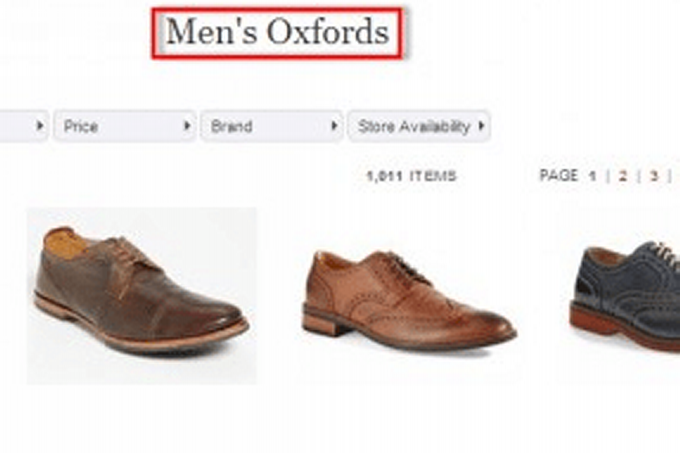
Google’s BERT algorithm, launched final week, is the corporate’s newest effort to grasp the intent of search queries. For ecommerce websites, the distinctive particulars on product pages might now drive extra natural search visitors with excessive buy intent.
BERT Algorithm
BERT — Bidirectional Encoder Representations from Transformers — is an open-source algorithm from Google to course of every phrase in a search question relative to different phrases in that question, versus one-by-one within the order they seem.
Amongst different issues, it does a greater job of evaluating prepositions — reminiscent of “to” and “with.”
BERT doesn’t exchange RankBrain, Google’s 2015 effort to grasp searchers’ intent. As an alternative, each RankBrain and BERT, utilized concurrently, might help decode intent and ship probably the most related search outcomes.
Google supplied a few examples, together with the one under for the question “2019 brazil traveler to USA want a visa.” Beforehand, Google would have proven natural listings for each U.S. and Brazil visas as a result of it didn’t perceive the significance of the preposition “to.” However now, the outcomes present solely information for vacationers to the U.S.
Earlier than the BERT algorithm, the question “2019 brazil traveler to USA want a visa” would have proven natural listings for each U.S. and Brazil visas. However now, the outcomes present solely information for vacationers to the U.S. Supply: Google. Click on picture to enlarge.
With BERT deployed within the U.S. by Oct. 25, Google’s natural search outcomes and featured snippets are nearer to offering searchers with related outcomes for extra complicated queries, reminiscent of long-tail ecommerce searches.
Product Pages
Product pages and filtered product grids are likely to rank higher for long-tail queries. Thus these pages have probably the most potential to learn from BERT. The significance of prepositions applies particularly to product attributes, reminiscent of coloration, measurement, and materials.
Think about all the product particulars that consumers seek for. These particulars often embrace product names and attributes linked by prepositions, which I’ve italicized within the examples under.
- “plantation window shutter with stable oak wooden;”
- “beaded 10-foot curtain with rainbow actual crystal beads;”
- “diamond solitaire engagement ring with rose gold band leaves.”
How your product pages specific these particulars is much more vital with BERT. It’s a chance to optimize the descriptions of your best-selling merchandise with content material that no different web site makes use of.
Based mostly on key phrase analysis, you already know a few of the product attributes that your searchers are interested by. Customers are telling Google what they need to purchase from their search queries. Google shares that knowledge in its Key phrase Planner.
All you must do is embrace attributes in your product element web page descriptions. For instance, to win a seek for “plantation window shutter with stable oak wooden,” a retailer might clarify within the description that its plantation shutters are made from wooden.
Furthermore, the shop ought to listing each out there end for these shutters. The way it does that is essential. Shade-swatch photos don’t assist engines like google. And itemizing solely coloration names doesn’t assist consumers. What’s wanted is each: a visible for consumers and a textual content label for engines like google.
One other BERT-friendly technique to focus on long-tail queries includes harnessing filtered site-search — these 1000’s of filtered product grids stemming from product attributes, reminiscent of “rose gold” and “solitaire” for a hoop, as in “solitaire ring in rose gold.”
Handle the technique fastidiously, nevertheless. Index solely pages with high-value filters. For instance, in line with Key phrase Planner knowledge, ring filters of “yellow gold” and “rose gold” have rather more natural search worth than a value filter of “below $1,000.”
Related Site visitors
For search queries containing each a product and attributes, Google vacillates between exhibiting product element pages and filtered product grids. As queries develop into extra complicated — reminiscent of these with attributes — the search outcomes might comprise each kinds of pages. However product element pages are likely to rank larger.
Google’s search algorithm nonetheless doesn’t absolutely perceive the nuances of human language. However the BERT algorithm helps. With its potential to judge the whole question, together with prepositions, BERT gives ecommerce websites a chance to drive extra related natural search visitors to product element and product grid pages.




















